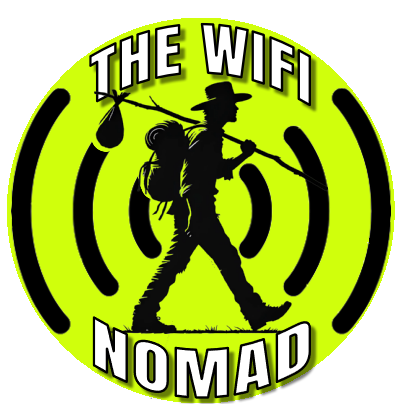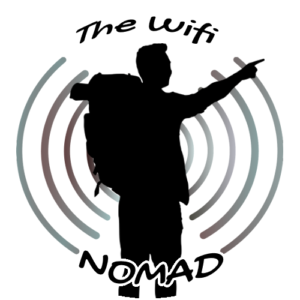I. Introduction
Have you ever spent hours writing a blog post or recording a YouTube video and felt like you’re talking to nobody? One reason for that empty room might be you’re not targeting a specific group of people. In other words you haven’t defined your niche.
Knowing your audience is like having a compass for your entire affiliate marketing journey. It tells you what they care about, what problems they need solved and what products or services they’ll buy. Without that compass your content will wander and leave potential followers (and earnings) behind.
In this article we’ll go deep into how to figure out who you’re talking to—busy moms looking for quick meal ideas, tech enthusiasts on a budget, avid travelers seeking insider tips. By the end you’ll have a clear framework to identify your audience’s needs, pains and preferences and be able to create content that resonates.
II. Why Knowing Your Audience Matters
A. Relevance of Content
Think of a stand-up comedian who tells jokes that bomb because they’re not tailored to the room. If you don’t know your audience you risk the same fate—except instead of a silent comedy club it’s a empty blog post or unclicked video link. When you know who you’re talking to you can share stories, tips and product recommendations that hit the mark and make people say “This was exactly what I needed!”
-
Example: A fitness blogger who targets “work-from-home professionals over 40” might focus on workouts you can do between Zoom calls. That’s more compelling than generic fitness advice especially for someone who has a full-time job and life responsibilities.
B. Higher Conversion Rates
At the core of affiliate marketing is the connection between the products you promote and the people who buy them. If you know your audience’s pain points and desires you can position products in a way that feels helpful not pushy. You’re not selling; you’re solving.
-
Takeaway: When people feel heard they’ll click through and buy using your affiliate links and your commission will increase and trust will build.
C. Resource Efficiency
Time is valuable. Every minute you spend creating content or researching products should get you closer to your goals. By targeting a specific audience you’ll waste less time on topics or formats that don’t interest them. This efficiency will lead to a more consistent publishing schedule and better content.
-
Pro Tip: If you’re running ads knowing your audience’s demographics and interests is key to targeting. You don’t want to pay for clicks from people who have zero interest in your niche.
III. Who Are You Talking To
A. Demographics
Demographic details are the basic stats about your readers or viewers—age range, gender, location and income level. These factors often influence buying habits and preferences.
-
Why It Helps: If your audience is younger with limited disposable income they’ll be more interested in budget friendly or DIY solutions. If your audience is more affluent they’ll be willing to spend more for premium products.
B. Psychographics
Psychographics go beyond numbers and get into attitudes, interests, values and lifestyles. This is where you answer questions like:
-
What are their hobbies or passions?
-
Are they health conscious, eco friendly or status driven?
-
Do they value convenience or do they enjoy researching products?
Understanding these motivations helps you frame your content in a way that resonates emotionally not just logically.
C. Behavioral Aspects
Think about your audience’s online habits and buying behavior. Do they prefer long form blog posts or short form videos? Are they impulse buyers or researchers who read multiple reviews before buying?
-
Platform Preference: Some demographics live on TikTok or Instagram; others prefer Facebook groups or LinkedIn. Knowing where they hang out will help you know where to share your affiliate links.
IV. Research Methods & Tools
A. Surveys and Polls
One easy way to learn about your audience is to just ask. If you already have a small email list or social media following create a quick poll or survey. Ask about their biggest challenges, their favorite products and what topics they’d like to learn more about.
-
Bonus: Offering a small incentive (like a free digital download or entry into a giveaway) can increase participation.
B. Social Media Listening
If you don’t have a large following yet join groups or forums related to your niche. Watch what questions people ask and which posts get the most engagement. This will give you clues to common pain points or interests your affiliate marketing can solve.
-
Example: A Facebook group dedicated to “vegan meal prep” might have questions about protein sources every week. That’s a clue to create content around high protein vegan recipes and feature relevant products.
C. Keyword Research & SEO Tools
Tools like Google Trends, Ubersuggest or SEMrush will show you what people are searching for and how popular those searches are. If you see a steady increase in searches for “DIY solar panels” for example that’s a clue to a growing interest in eco friendly home solutions—perfect if your niche is sustainability or budget friendly home improvements.
-
Practical Step: Type your niche topics into these tools. Note the related keywords people are using. These keywords are clues to your audience’s needs and desires.
D. Competitor Analysis
Look at blogs, YouTube channels or Instagram accounts that cover similar topics. Check the comments section or Q&A sessions. The feedback they get—both praise and complaints—will give you clues on what resonates with your shared audience and what’s missing from the conversation.
-
Action Step: Subscribe to a few competitor newsletters or channels. See how they engage with their audience, which topics get the most traction and what affiliate products they promote.
V. Audience Personas
A. Persona Basics
An audience persona is a fictional character representing your ideal viewer or reader. You give them a name, age, job and a mini backstory. It might sound a bit silly at first but this exercise helps you to humanize your audience.
-
Example: “Meet Karen, 38 year old working mom of two who wants to stay fit without spending hours at the gym.”
B. Pain Points & Solutions
What are Karen’s (or your persona’s) biggest challenges? Time constraints? Budget issues? Lack of motivation? Once you know these obstacles you can think about how your content and affiliate offers can help solve them.
-
Tie-In: If your persona struggles with meal planning you could promote a weekly meal kit subscription. If they lack time for research a curated product review list would be their saviour.
C. How Personas Guide Content
By referring back to your persona you’ll find it easier to come up with topics or angles for your blog posts, videos or social media updates. Instead of asking “What should I write today?” you’ll ask “What does Karen need help with right now?”
-
Consistency: Over time your persona will keep you grounded and stop you from going off topic or promoting irrelevant products.
VI. Content Marketing
A. Content Strategy
Knowing your audience’s profile (demographics, psychographics and behaviors) helps you decide what type of content to create. For a busy parent persona short videos with quick tips might perform better than long blog posts.
-
Practical Example: If your niche is “budget travel for college students” create content around cheap flights, hostel hacks or part time job ideas to fund a trip. Each piece of content can naturally integrate affiliate links for booking sites or travel insurance plans.
B. Promotion Channels
You don’t have to be on every platform. If your audience is Gen Z TikTok or Instagram Reels might be more relevant than a traditional blog. If you’re targeting an older professional crowd LinkedIn or a well structured blog might be more effective.
-
Efficiency Tip: Focus on the 1-2 channels where you can show up consistently and engage with your audience rather than spreading yourself thin across 5 platforms.
C. Messaging
Is your audience casual and laid back or more formal and detail oriented? Do they like humor or do they prefer concise, straight to the point facts? Tailor your tone and language accordingly to hit the mark.
-
Avoid Overcomplication: If your niche is tech reviews for beginners ditch the jargon and explain in simple terms. If your readers are advanced coders you can go heavy on the tech speak without losing them.
VII. Real World Examples / Case Studies
Example 1: Fitness Niche
-
Persona: Devon, 35 year old office worker who wants quick at-home workout routines.
-
Problem: No time or energy for a full gym session.
-
Solution: Blog posts with 15 minute workouts, affiliate links to portable exercise gear or streaming fitness platforms.
-
Channel: Instagram Reels or short YouTube videos to demo exercises.
Example 2: Vegan Cooking Niche
-
Persona: Alex, college student on a tight budget who wants easy vegan meals.
-
Problem: Limited money and tiny dorm kitchen.
-
Solution: Step-by-step meal prep videos, affiliate links to affordable cookware or meal-delivery kits.
-
Channel: TikTok for quick recipe demos, blog for written instructions.
Example 3: Tech Review Niche
-
Persona: Brian, remote worker setting up a home office on a tight budget.
-
Problem: Doesn’t want to break the bank but needs reliable gear.
-
Solution: Articles or videos reviewing budget laptops, ergonomic chairs and multi-port chargers.
-
Channel: YouTube for reviews, blog for written recaps.
These examples show how different personas lead to different content ideas, affiliate links and promotion channels.
VIII. Action Steps (CTA)
1. Audience Deep Dive
-
Task: Conduct a quick survey if you have an existing audience, or observe online communities if you’re starting from scratch. Write down at least 5 common questions or problems people mention over and over.
2. Create At Least One Persona
-
Task: Give them a name, age, job and list their main challenges, goals and interests. Post this persona somewhere you’ll see it often (a digital note, a pinned document etc.).
3. Plan Content
-
Task: Come up with 5-10 content ideas that solve your persona’s problems. Consider affiliate products for each topic.
4. Subscription CTA
-
Reason: Let your readers know the next article is “Finding the Right Affiliate Programs”—a critical follow up once you know who you’re targeting.
-
CTA: Tell them to subscribe or follow you so they don’t miss it.
IX. Teaser for the Next Article
“Next Up: Finding the Right Affiliate Programs”
Now that you have your audience, it’s time to match them with the products or services they really need. In Article #5 we’ll get into how to find top affiliate programs, compare commission rates and apply successfully even if you’re a beginner. This is where audience awareness meets product selection and it’s a big step in maximizing your earnings.
X. Conclusion
Finding your target audience can feel like detective work but it’s the foundation of any affiliate marketing strategy. Once you know who you’re talking to everything else – content creation to product recommendations – becomes more focused and effective. You’ll stop shouting into the void and start talking to people who actually care about what you have to say.
Remember the more you know about your audience’s demographic details, psychological motivators and online habits the more you can speak to their needs. Creating audience personas turns marketing guesses into concrete insights so you can tailor your approach and stand out in a crowded online space.
Once you’ve finished your audience research don’t forget to set up a system to keep track of your notes—maybe a spreadsheet of topics, a notebook of user questions or a digital persona board. This will be your reference for everything you create. Then get ready for the next article: Finding the Right Affiliate Programs. That’s where we’ll take the insights you’ve gathered about your audience and apply them to products that really work.


